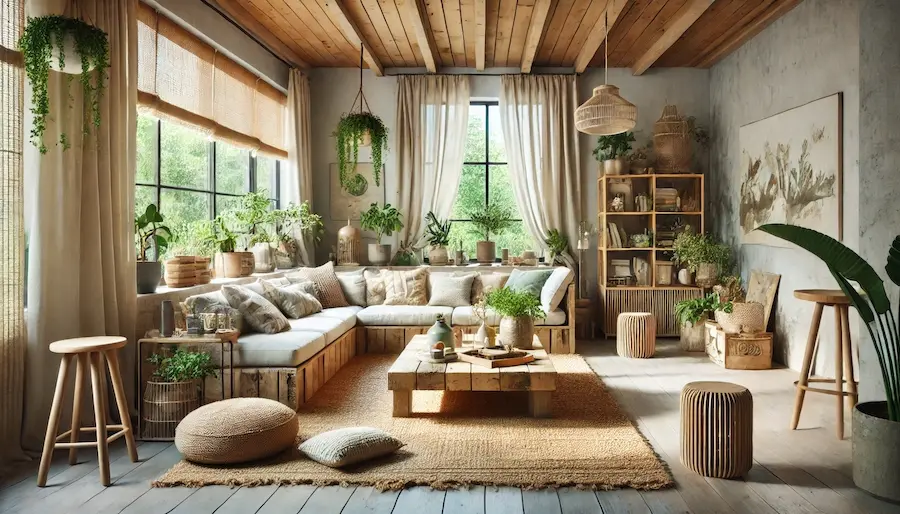Designing a sustainable living room involves making eco-friendly choices that minimize environmental impact while creating a comfortable and stylish space.
Key Features of a Sustainable Living Room
- Eco-Friendly Materials: Opt for furniture and decor made from sustainable resources such as reclaimed wood, bamboo, or recycled materials. These choices reduce the demand for new raw materials and promote recycling.
- Energy-Efficient Lighting: Utilize LED or CFL bulbs, which consume less energy and have longer lifespans compared to traditional incandescent bulbs. Incorporate dimmers and sensors to further enhance energy efficiency.
- Natural Textiles: Choose upholstery, rugs, and curtains made from organic fibers like cotton, linen, or wool. These materials are biodegradable and often produced with fewer chemicals.
- Indoor Plants: Incorporate houseplants to improve air quality and introduce natural beauty into the space. Plants act as natural air purifiers, enhancing the room’s ambiance.
Applications of Sustainable Design in Living Rooms
- Upcycled Furniture: Repurpose old furniture or decor items to give them a new life, reducing waste and adding unique character to your living room. For example, transforming wooden crates into bookshelves or coffee tables.
- Low VOC Paints: Use paints and finishes with low volatile organic compounds (VOCs) to minimize indoor air pollution and create a healthier environment.
- Sustainable Flooring: Select flooring options like bamboo, cork, or recycled materials that are durable and have a lower environmental impact.
Considerations When Designing a Sustainable Living Room
- Quality Over Quantity: Invest in high-quality, timeless pieces that are durable and less likely to need replacement, reducing consumption over time.
- Local Sourcing: Purchase furniture and decor from local artisans to reduce the carbon footprint associated with transportation and support the local economy.
- Energy Conservation: Incorporate window treatments that provide insulation, reducing the need for heating and cooling, and consider installing programmable thermostats to manage energy use efficiently.
Conclusion
Creating a sustainable living room is a thoughtful process that combines eco-friendly materials, energy efficiency, and mindful consumption. By making conscious choices, you can design a space that is both environmentally responsible and aesthetically pleasing.
